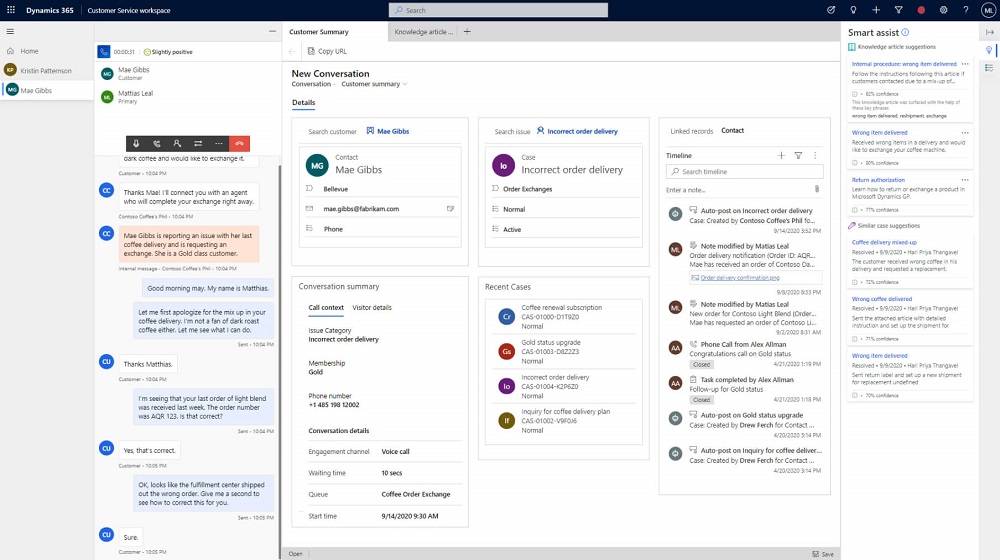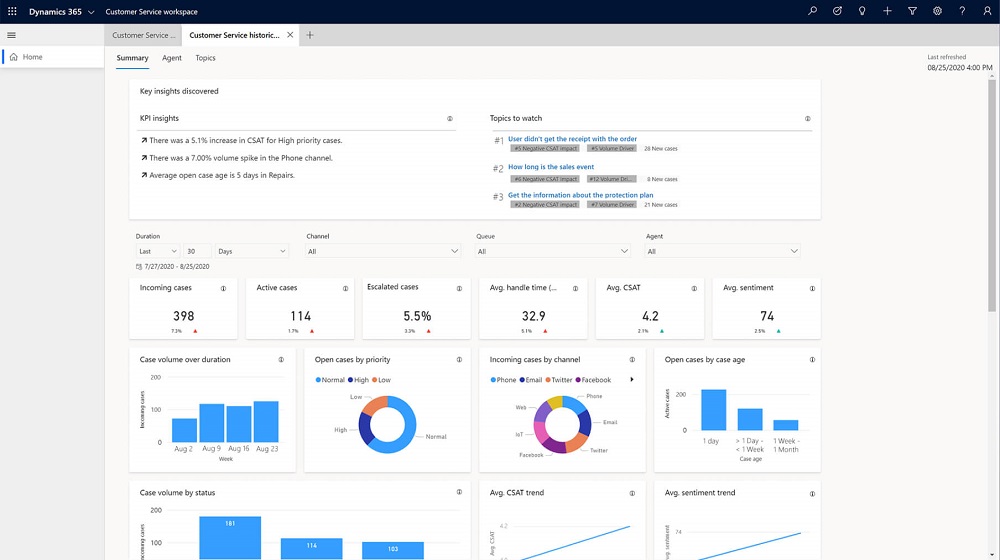rgaOrganisations today recognise that good service is no longer defined by how quickly a single agent responds — it is defined by the consistency, traceability and professionalism of the entire service function.
As customer expectations rise, and service volumes increase across departments and channels, managing inbound queries through email inboxes or basic ticketing tools becomes unsustainable. What matters is disciplined case handling, full visibility of every interaction and the ability to turn service data into measurable operational improvement.
This is exactly where using Microsoft Dynamics 365 for case management can deliver value. Dynamics 365 Customer Service gives service teams a structured way to intake, review, escalate and resolve support issues, while maintaining a complete audit trail of actions, stakeholders, timelines and outcomes. For service leaders, the platform is both an operational system and a managerial control layer: one source of truth for performance, workload, compliance and customer experience.
What Case Management Means In A Modern Service Team
Case management goes far beyond logging problems. It is the operational discipline of managing the entire lifecycle of a service issue from first contact to final resolution. A case may pass through several agents or departments, involve internal investigation or approvals, or require specialist intervention. Without a formal system, delays and inconsistencies creep in, leading to slow resolution and low confidence in the service function.
Utilising Dynamics 365 for case management, every interaction is structured. A case is created, categorised and prioritised. Ownership and next actions are clear. Escalation triggers, SLA timers and workflow actions ensure no request goes missing or stalls. This improves accountability, reduces manual chasing and strengthens cross-team handover.

Why Many Organisations Outgrow Basic Ticketing Tools
Basic ticketing software addresses only the initial problem logging. It rarely delivers real process standardisation, and lacks depth for analytics, governance or service transformation. Common pain points include:
-
No visibility of wider customer history or related issues
-
Reliance on manual triage and re-routing
-
Limited SLA tracking
-
Poor ownership clarity, especially across departments
-
Inconsistent notes or record-keeping
-
No clear reporting on performance or recurring patterns
As service volumes increase, these systems create operational drag. Time is wasted searching for information instead of resolving issues. Managers lack meaningful oversight. Leadership cannot rely on the data. Dynamics 365 moves service teams beyond reactive support into structured service operations.
How Dynamics 365 For Case Management Works
A Microsoft case management solution can span the same data utilised by any sales and marketing CRM solutions an organisation may run.
With your entire organisation working from the same data source, it’s easy to keep all customer and prospect data up-to-date in a single system. The system's case record contains all of the essential information required for the support agent to analyse the issue and offer customer services accordingly.
Having case data information centralised against customer records can also assist sales, ensuring they reach out at the optimum point of the relationship and don’t contact customers at a time when they may be experiencing issues.
Centralising service data
Dynamics 365 consolidates customer details, case records, historical interactions, related documentation and notes into a single system. Instead of working from disconnected touchpoints, agents see the full picture at once. This improves context, speeds resolution and avoids duplication.

Managing the full lifecycle of a case
Cases are moved through a structured workflow — intake, triage, investigation, assignment, escalation and closure. Each stage is traceable. If more information is required or an additional team becomes involved, the full timeline remains intact. This stops the “who was handling this last?” problem and preserves continuity for the customer.
SLA enforcement and escalation
SLAs can be configured by case type, customer, contract or channel. The system monitors thresholds and automatically escalates or reprioritises when targets are at risk. This takes pressure off managers and prevents service failures from being spotted too late.
Routing and ownership
Cases can be assigned manually or automatically based on skillset, department, product line or priority. This ensures the right people see the right work at the right time. Managers gain transparency over workloads and capacity, while agents avoid time lost triaging requests that don’t belong to them.
Operational benefits for service teams
Faster triage and resolution
Routing rules and a structured case interface eliminate ambiguity. Agents spend less time working out what to do next and more time resolving the core issue.

Clear accountability
Every case has a defined owner, status and timeline. If a request stalls, it is immediately visible. Internal follow-up becomes systematic instead of reactive.
Consistency across departments
Standard templates and workflows ensure similar issues are handled in the same way, regardless of the individual agent. This protects brand quality and removes subjectivity from the process.
Turning service data into meaningful improvement
A major strength of Dynamics 365 for Case Management is the insight it creates. Leadership teams can see:
-
Resolution times by agent or team
-
SLA adherence trends
-
Recurring case topics or root causes
-
Seasonal or capacity-driven volume spikes
-
Where escalations are commonly occurring
-
Which service areas create the highest operational cost
This enables proactive management rather than firefighting. Instead of asking “how busy are we?” service leaders can ask “how efficient are we, and where can we improve?”
Driving standardisation and operational maturity
Most service leaders want two things: transparency and predictability. Dynamics 365 delivers both. Teams operate from a common process. Knowledge is retained rather than locked in personal inboxes. Tasks are structured. Follow-up is traceable. Managers can see where delays originate, and senior stakeholders can trust the data.
As organisations scale — whether through higher case volume, additional service lines or more complex customer relationships — Dynamics 365 ensures the process remains consistent. What would typically require additional headcount is instead handled by better structure and automation.
What good implementation looks like
Effective case-management improvement is not about turning on software. It is about operationalising process. The most successful implementations share five traits:
-
Cases categories are defined clearly
-
Ownership criteria are transparent
-
SLAs and escalation logic match reality
-
Agents know their role in the workflow
-
Reporting drives behaviour, not just record-keeping
Where most tools stop at logging activity, Dynamics 365 helps enforce and uplift the quality of the service process itself.
Why Dynamics 365 is a strategic choice
Because Dynamics 365 sits within the wider Microsoft ecosystem, it integrates natively with Outlook, Microsoft Teams, Power BI and eventually Power Platform automation.
Service data can trigger operational workflows, improvement actions or even cross-department collaboration without separate tooling. For organisations already invested in Microsoft technology, this lowers cost, improves adoption and allows future expansion into omnichannel, AI-driven triage or self-service portals at the right pace.
Want to see more about a Microsoft case management solution? Get in touch:





